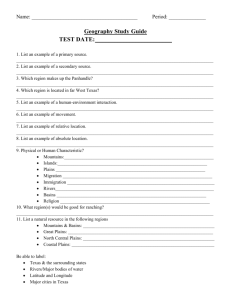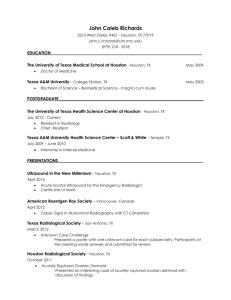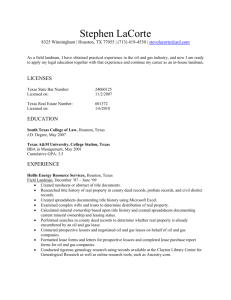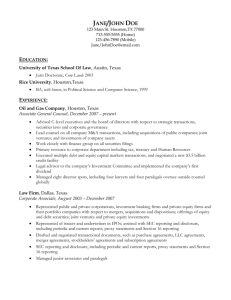Sam Houston in 1861.
advertisement
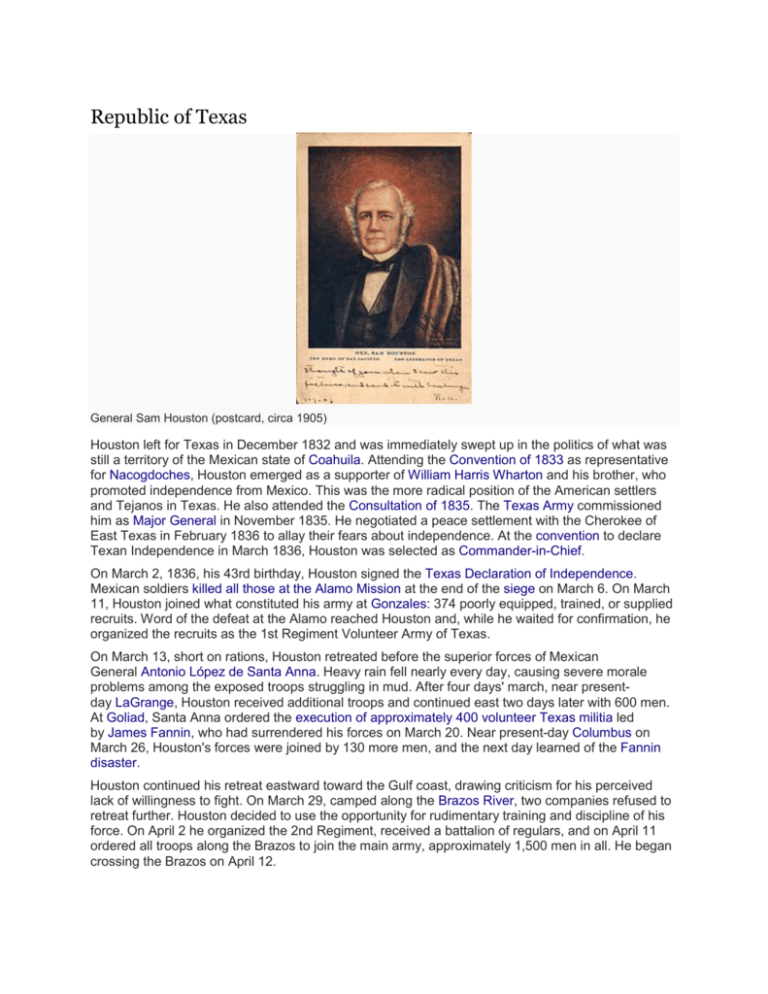
Republic of Texas General Sam Houston (postcard, circa 1905) Houston left for Texas in December 1832 and was immediately swept up in the politics of what was still a territory of the Mexican state of Coahuila. Attending the Convention of 1833 as representative for Nacogdoches, Houston emerged as a supporter of William Harris Wharton and his brother, who promoted independence from Mexico. This was the more radical position of the American settlers and Tejanos in Texas. He also attended the Consultation of 1835. The Texas Army commissioned him as Major General in November 1835. He negotiated a peace settlement with the Cherokee of East Texas in February 1836 to allay their fears about independence. At the convention to declare Texan Independence in March 1836, Houston was selected as Commander-in-Chief. On March 2, 1836, his 43rd birthday, Houston signed the Texas Declaration of Independence. Mexican soldiers killed all those at the Alamo Mission at the end of the siege on March 6. On March 11, Houston joined what constituted his army at Gonzales: 374 poorly equipped, trained, or supplied recruits. Word of the defeat at the Alamo reached Houston and, while he waited for confirmation, he organized the recruits as the 1st Regiment Volunteer Army of Texas. On March 13, short on rations, Houston retreated before the superior forces of Mexican General Antonio López de Santa Anna. Heavy rain fell nearly every day, causing severe morale problems among the exposed troops struggling in mud. After four days' march, near presentday LaGrange, Houston received additional troops and continued east two days later with 600 men. At Goliad, Santa Anna ordered the execution of approximately 400 volunteer Texas militia led by James Fannin, who had surrendered his forces on March 20. Near present-day Columbus on March 26, Houston's forces were joined by 130 more men, and the next day learned of the Fannin disaster. Houston continued his retreat eastward toward the Gulf coast, drawing criticism for his perceived lack of willingness to fight. On March 29, camped along the Brazos River, two companies refused to retreat further. Houston decided to use the opportunity for rudimentary training and discipline of his force. On April 2 he organized the 2nd Regiment, received a battalion of regulars, and on April 11 ordered all troops along the Brazos to join the main army, approximately 1,500 men in all. He began crossing the Brazos on April 12. Surrender of Santa Anna by William Henry Huddle shows the Mexican general Santa Anna surrendering to a wounded Sam Houston. It hangs in the Texas State Capitol. Finally, Santa Anna caught up with Houston's army, but had split his own army into three separate forces in an attempt to encircle the Texans. At the Battle of San Jacinto on April 21, 1836, Houston surprised Santa Anna and the Mexican forces during their afternoon "siesta." The Texans won a decisive victory in under 18 minutes, suffering few casualties. Houston's ankle was shattered by a stray bullet. Badly beaten, Santa Anna was forced to sign the Treaty of Velasco, granting Texas its independence. Although Houston stayed on briefly for negotiations, he returned to the United States for treatment of his ankle wound. Houston was twice elected president of the Republic of Texas. In the 1836 election, he defeated Stephen F. Austin and Henry Smith with a landslide of over 79% of the vote. Houston served from October 22, 1836, to December 10, 1838, and again from December 12, 1841, to December 9, 1844. While he initially sought annexation by the U.S., Houston dropped that goal during his first term. In his second term, he strove for fiscal prudence and worked to make peace with the various tribes of Native Americans in the Republic. He also struggled to avoid war with Mexico, whose forces invaded twice during 1842. In response to the Regulator-Moderator War of 1844, he sent in Republic militia to put down the feud. Houston still believed that the U.S annexation of Texas was not a realistic goal and the U.S. Senate would never pass it because of the delicate situation between the recently independent Texas and Mexico. However, Houston was a politician and as such he sought to preserve his career by endorsing the support of annexation into the U.S. Without his endorsement, the Texas congress would have put the question to public election and upon its likely passing would have effectively destroyed Houston's career as a Texas politician. To help save his political reputation, Houston sent James Pinckney Henderson to Washington to help Van Zandt advocate the annexation of Texas. Settlement of Houston The European-American settlement of Houston was founded in August 1836 by brothers J.K. Allen and A.C. Allen. It was named in Houston's honor and served as capital. Gail Borden helped lay out Houston's streets. In 1837, during Houston's first term as President of the Republic of Texas, he joined the masonic Holland Lodge No. 36. It was founded in Brazoria and was relocated in 1837 to what is now Houston. On December 20, 1837, Houston presided over the convention of Freemasons that formed the Grand Lodge of the Republic of Texas, now the Grand Lodge of Texas. The city of Houston served as the capital of the republic until President Mirabeau Lamar signed a measure that moved the capital to Austin on January 14, 1839. Between his presidential terms (the constitution did not allow a president to serve consecutive terms), Houston was elected as a representative from San Augustine in the Texas House of Representatives. He was a major critic of President Mirabeau Lamar, who advocated continuing independence of Texas, annihilation of American Indians, and the extension of Texas's boundaries to the Pacific Ocean. U.S. Senator from Texas Senator Sam Houston 1859 After the annexation of Texas by the United States in 1845, Houston was elected to the U.S. Senate by the Texas state legislature, along with Thomas Jefferson Rusk. Houston served from February 21, 1846, until March 4, 1859. He was a Senator during the Mexican-American War, when the U.S. defeated Mexico and acquired vast expanses of new territory in the Southwest as part of the concluding treaty. Throughout his term in the Senate, Houston spoke out against the growing sectionalism of the country. He blamed the extremists of both the North and South, saying: "Whatever is calculated to weaken or impair the strength of [the] Union,—whether originating at the North or the South,—whether arising from the incendiary violence of abolitionists, or from the coalition of nullifiers, will never meet with my unqualified approval." Houston supported the Oregon Bill of 1848, which was opposed by many Southerners. In his passionate speech in support of the Compromise of 1850, echoing Matthew 12:25, Houston said "A nation divided against itself cannot stand." Eight years later, Abraham Lincoln would express the same sentiment. Houston opposed the Kansas-Nebraska Act in 1854, and correctly predicted that it would cause a sectional rift in the country that would eventually lead to war, saying: " ... what fields of blood, what scenes of horror, what mighty cities in smoke and ruins—it is brother murdering brother ... I see my beloved South go down in the unequal contest, in a sea of blood and smoking ruin." He was one of only two Southern senators (the other was John Bell of Tennessee) to vote against the act. At the time, he was considered a potential candidate for President of the United States. But, his strong Unionism and opposition to the extension of slavery alienated the Texas legislature and other southern States. As a former President of Texas, he was the last foreign head of state to serve in the U.S. Congress. Governor of Texas Sam Houston Houston ran twice for governor of Texas as a Unionist, unsuccessfully in 1857, and successfully against Hardin R. Runnels in 1859. Upon election, he became the only person elected to serve as governor of two U.S. states, Texas and Tennessee, by popular vote. (Whereas Thomas McKean andJohn Dickinson had each served as chief executives of Delaware and then of Pennsylvania in the late 18th century, and other state governors had also served as governors of American territory, they achieved at least one of their positions by indirect election or appointment.) Although Houston was a slave owner and opposed abolition, he opposed the secession of Texas from the Union. An elected convention voted to secede from the United States on February 1, 1861, and Texas joined the Confederate States of America on March 2, 1861. Houston refused to recognize its legality, but the Texas legislature upheld the legitimacy of secession. The political forces that brought about Texas's secession were powerful enough to replace the state's Unionist governor. Houston chose not to resist, stating, "I love Texas too well to bring civil strife and bloodshed upon her. To avert this calamity, I shall make no endeavor to maintain my authority as Chief Executive of this State, except by the peaceful exercise of my functions ... " He was evicted from his office on March 16, 1861, for refusing to take an oath of loyalty to the Confederacy, writing, Fellow-Citizens, in the name of your rights and liberties, which I believe have been trampled upon, I refuse to take this oath. In the name of the nationality of Texas, which has been betrayed by the Convention, I refuse to take this oath. In the name of the Constitution of Texas, I refuse to take this oath. In the name of my own conscience and manhood, which this Convention would degrade by dragging me before it, to pander to the malice of my enemies, I refuse to take this oath. I deny the power of this Convention to speak for Texas....I protest....against all the acts and doings of this convention and I declare them null and void. The Texas secession convention replaced Houston with Lieutenant Governor Edward Clark. To avoid more bloodshed in Texas, Houston turned down U.S. Col. Frederick W. Lander's offer from President Lincoln of 50,000 troops to prevent Texas's secession. He said, "Allow me to most respectfully decline any such assistance of the United States Government." After leaving the Governor's mansion, Houston traveled to Galveston. Along the way, many people demanded an explanation for his refusal to support the Confederacy. On April 19, 1861 from a hotel window he told a crowd: Let me tell you what is coming. After the sacrifice of countless millions of treasure and hundreds of thousands of lives, you may win Southern independence if God be not against you, but I doubt it. I tell you that, while I believe with you in the doctrine of states rights, the North is determined to preserve this Union. They are not a fiery, impulsive people as you are, for they live in colder climates. But when they begin to move in a given direction, they move with the steady momentum and perseverance of a mighty avalanche; and what I fear is, they will overwhelm the South. Personal life and death Sam Houston, photograph byMathew Brady, c.1860–1863 On January 22, 1829, at the age of 35, Houston married 19-year-old Eliza Allen, the daughter of the well-connected planter Colonel John Allen (1776–1833) of Gallatin, Tennessee. He was a friend of politician Andrew Jackson, soon to take office as President of the United States. Houston was then governor of Tennessee. Eliza left Houston shortly after their marriage. She publicly said that he had sustained the "dreadful injury" of emasculation in the Creek War of 1814. Subsequent to their separation and her statement, Houston resigned the governorship. Neither Houston nor Eliza ever discussed the reasons for their separation; speculation and gossip credited their split to Eliza's being in love with another man. The aforementioned public statement and Houston's resignation suggest other reasons. Houston seems to have cared for his wife's reputation and wrote to her father. In April 1829, in part due to the scandal of his well-known separation, Houston resigned as governor of Tennessee. He went west with the Cherokee in Indian Removal to exile in Arkansas Territory. That year he was adopted by Chief John Jolly and thus made a member of the Cherokee. Houston married Tiana Rogers (d. 1838), daughter of Chief John Headman Hellfire Rogers (1740–1833) and Jennie Due (1764–1806), a sister of Chief John Jolly, in a ceremony according to Cherokee customs. Tiana was in her mid-30s, of mixed-race, and the widow of David Gentry, Jr. She had two children from her previous marriage: Gabriel, born 1819, and Joanna, born 1822. She and Houston lived together for several years. Under civil law, he was still legally married to Eliza Allen Houston. Tiana and Houston had one known child: Margaret Lewis Head Houston, born 1830. After declining to accompany Houston to Texas in 1832, Tiana later married John McGrady. In 1838 she died of pneumonia and is buried at Fort Gibson National Cemetery with a grave maker reading "Talahina R. wife of Gen. Sam Houston". Houston officially divorced Eliza Allen Houston in 1837. (She remarried in 1840 to Dr. Elmore Douglass, becoming a stepmother to his ten children. She had four children with him and died in 1861.) In 1833, Houston was baptized into the Catholic faith in order to qualify under the existing Mexican law for property ownership in Coahuila y Tejas. The sacrament was held in the living room of the Adolphus Sterne House in Nacogdoches. On May 9, 1840, Houston, aged 47, married for a third time. His bride was 21-year-old Margaret Moffette Lea of Marion, Alabama, the daughter of planters. They had eight children born between Houston's 51st and 68th years. Margaret acted as a tempering influence on her much older husband and convinced him to stop drinking. Although the Houstons had numerous houses, they kept only one continuously: Cedar Point (1840–1863) on Trinity Bay. Sam Houston in 1861. By 1854, Margaret had spent 14 years trying to convert Houston to the Baptist church. With the assistance of George Washington Baines, she convinced Houston to convert; he agreed to adult baptism. Spectators from neighboring communities came to Independence, Texas to witness the event. On November 19, 1854, Houston was baptized by Rev. Rufus C. Burleson by immersion in Little Rocky Creek, two miles southeast of Independence. The baptismal site is marked by the Texas Historical Commission as located on Farm to Market Road 150 at Sam Houston Road. In 1862, Houston returned to Huntsville, Texas, and rented the Steamboat House; the hills in Huntsville reminded him of his boyhood home in Tennessee. Houston was active in the Masonic Lodge, transferring his membership to Forrest Lodge #19. His health deteriorated in 1863 due to a persistent cough. In mid-July, Houston developed pneumonia. He died on July 26, 1863 at Steamboat House, with his wife Margaret by his side. The inscription on his tomb reads: A Brave Soldier. A Fearless Statesman. A Great Orator—A Pure Patriot. A Faithful Friend, A Loyal Citizen. A Devoted Husband and Father. A Consistent Christian—An Honest Man. Sam Houston was buried in Huntsville, where he had lived in retirement. After her death, Margaret was buried in Independence at her family's cemetery.
